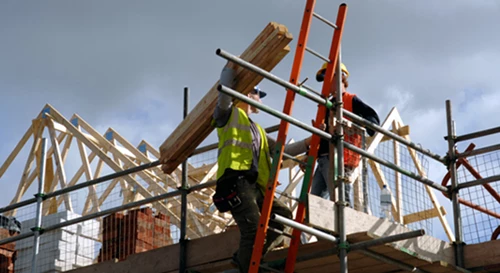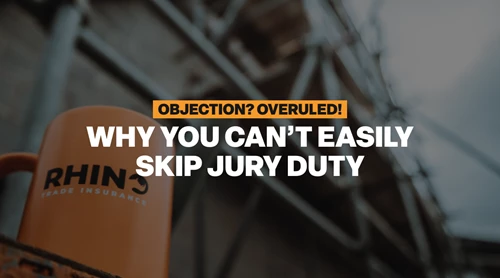As you will know, accidents can happen at work. Here we take a look at building contractors area of expertise, the construction industry and how the number of accidents can be reduced.
THE TOP 5 REASONS FOR ACCIDENTS WITHIN THE CONSTRUCTION INDUSTRY IN THE UK ARE AS FOLLOWS:
-
Falls from a height - 49%
-
Trapped by something collapsing / overturning - 14%
-
Struck by moving vehicle - 11%
-
Stuck by moving, including flying / falling object - 10%
-
Contact with electricity or electrical discharge - 5%
Source: HSE (Health and Safety Executive)
Working on a building site can be rewarding but also has its risks. It is crucial for all tradesman to be safe on site and we’ve put together some ideas on how to prevent accidents from occurring. See below.

Safety plan
It is important that before you carry out any work, you carry out a risk assessment and have a clear plan of action in case any accidents do occur. The risk assessment can help to determine preventive measures to control these risks.
Safety training
Whether you are a sole-trader or have employees it is important that you have knowledge of the safety standards and hazards that could affect the worker whilst working. Reviewing the health and safety policy for each job is also helpful for knowledge. The health and safety policy will outline the procedure to be followed when carrying out the job. Regarding the use of equipment, staff should not be using equipment that they are not qualified or trained to use. Where needed, relevant training should be provided for use of equipment.
Safe use of tools and machinery
Before using a piece of machinery, it is important to ensure that it is fully working. There has been many instances where machinery and tools have caused serious harm sometimes even resulting in death. As mentioned in the point above, it is a key factor the worker is trained or knows how to use the equipment.
Personal Protective Equipment (PPE)
Personal Protective Equipment (PPE) is special clothing worn by a worker to protect them against health and safety hazards. Builders should wear the recommended safety equipment / great that they need in order to carry out their job. This can include, high visibility clothing, a protective vest or suit, safety glasses and shoes that have a good grip, including waterproof footwear. Protective gear can also be dependent on weather.
Keep your workstation clean
A construction site can have many hazards around. Keeping the area clean of debris can help to reduce the likeliness of accidents from occurring. Walkways should also be kept clean of debris. Once you have finished the job for the day, we recommend that you put the tools used away.
Preventing falls
In the construction industry, a fall is the leading cause of fatalities with 49%, so it is important that the worker is at full protection from falls. When working at height, the installation of a fall protection system (and there are many types available) is crucial. If the fall protection gear has been fitted correctly, the chances of an incident occurring will be reduced significantly.
Avoid the night shift
In winter time, as we know it gets dark outside early and the ability to see things clearly becomes more difficult. Fatigue is also common during the nighttime. Both factors can affect productivity and could lead to an incident occurring. If you are working at night time, try to make sure that you only carry out work in a low risk area where there are not as many hazards, know the hazards around you and undertake health and safety training.
Stop and take breaks
Carrying out a job which involves a lot of manual labour, can be very tiring for the worker especially when having to lift heavy items. Breaks are essential as they can help to boost productivity and are good for general well-being. A short break can be taken every hour or so and can last from 5-15 minutes. However, longer breaks can also be taken, it just all depends on the person and how they prefer to work.





